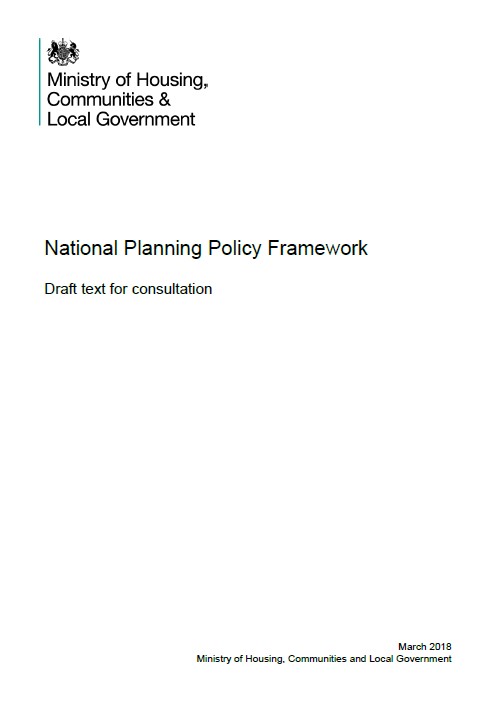The Government has published its draft revision of the National Planning Policy Framework (NPPF). The revision consolidates a series of proposals, which have been included in previous consultation documents, including the Housing White Paper and the Planning for the right homes in the right places consultation.
On the consultation page, which also includes links to the consultation on Supporting housing delivery through developer contributions and a research report on Section 106 planning obligations and the Community Infrastructure Levy in England, 2016 to 2017: report of study, the government says:
“This planning reform package is fundamental to delivering the homes we need and ensuring that we get the right homes, of the right quality, built in the right places.”
The consultation on the NPPF is set to close on 10 May 2018 and everyone is invited to respond. The easiest way to do this is via the online form and a copy of the draft revision of the NPPF can be downloaded here.
Most of the changes proposed in the draft NPPF were expected and as such this post merely provides a summary of the points relating to transport.
The revised NPPF is approximately equal in volume to the previous document but most helpful is the new structure, which has been divided up into 17 topic sections. Chapter 9 is a direct replacement of the previous Chapter 4 under the same heading “Promoting sustainable transport”.
Within chapter 9 the following text reflects the previous announcements or consultation proposals:
“Paragraph 103b reflects the housing White Paper proposal that authorities should be expected to identify additional development opportunities arising from strategic infrastructure investment. “
“Paragraph 107 incorporates the Written Ministerial Statement of 25 March 2015 on parking standards.”
Paragraph 107 introduces the notion that maximum parking standards should only be set where there is a clear and compelling justification (implying that maximum parking standards should not be applied as a matter of course).
The policy requiring the assessment of transport impact of proposals (previously paragraph 32 now at paragraphs 108-110) now put emphasis on highway safety as well as capacity and congestion. The highest priority is given to the sustainable modes of transport, such as pedestrians and cyclists, followed by access to high quality public transport. We note that a definition of severe impact is still absent from the revised document.
Chapter 9 has been revised to improve the structure. The main message is that transport should be considered in a variety of ways and addressed as fully as possible.
Further revisions relating to transport appears in chapter 11 that covers ”Making effective use of land”. In paragraph 123 it is made clear that minimum density standards are expected to be used in town and city centres around transport hubs as well as in other areas well served by public transport. Paragraph 123a further states:
“These standards should seek a significant uplift in the average density of residential development within these areas “
In regard to the Green Belt; in chapter 13 called “Protecting Green Belt land” paragraph 137 is now clarifying that when the need for Green Belt change has been demonstrated (paragraph 135) in “exceptional circumstances” (paragraph 136), then local plans should firstly consider releasing brownfield land and/or land which is “well-served by public transport”, whilst also considering offsetting measures.
The presumption in favour of sustainable development remains at the heart of the NPPF. The wording (now in paragraph 11) has been reordered to reflect the way that plan and decision-making are approached in practice. The consultation document also sets out an expectation for objectively assessed needs to be accommodated unless there are strong reasons not to, including any unmet needs from neighbouring areas.
Daniel Ekstrand, Associate Director, said:
“The draft text for consultation does not contain any revolutionary changes from the 2012 NPPF, however it is encouraging to see that more emphasis has been put on the importance of sustainable modes of transport and the need for transport planning to be considered early in the planning process. Hopefully the proposed revisions will assist in enabling the delivery of the housing the UK desperately needs, but the sceptics among us will say the government has not dared to go far enough”






